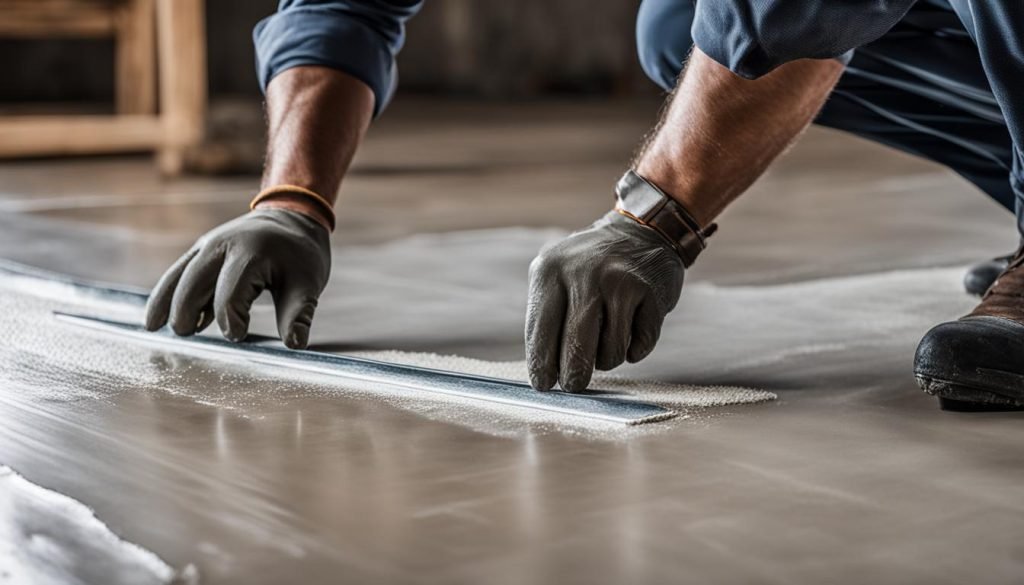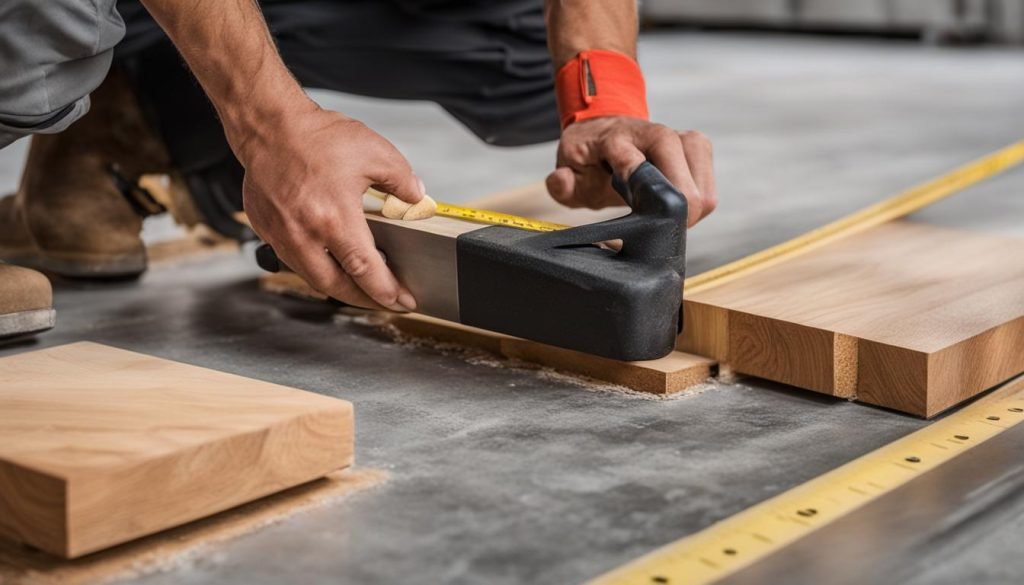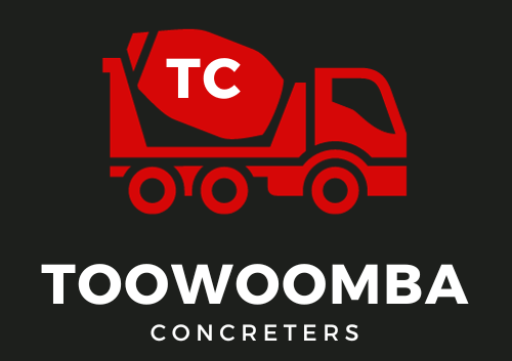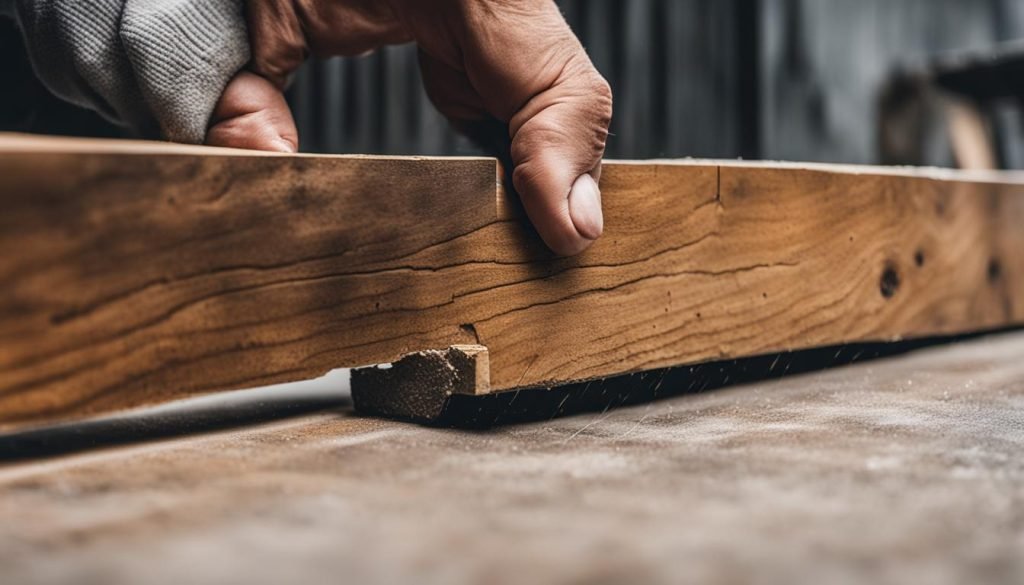Installing timber flooring on a concrete slab can transform the look and feel of any space, adding warmth and character to your home or office. However, it’s essential to follow proper techniques and guidelines to ensure a successful and long-lasting installation. Click here for A trusted concreting contractor in Toowoomba for innovative concrete solutions. Broaden your construction skills with this comprehensive guide on How to Build a Deck on Concrete Slab: Step-by-Step Guide. Explore valuable insights and step-by-step guidance for success in building a deck on a concrete slab.
In this comprehensive guide, we will walk you through the steps of laying timber flooring on a concrete slab. From concrete slab preparation to choosing the right installation method, we’ll cover all the important aspects to help you achieve a professional-looking result.
Whether you’re a DIY enthusiast or a professional contractor, this guide will provide you with valuable insights and tips to make the process seamless and rewarding. So, let’s dive in and explore the world of timber flooring installation on a concrete slab.
Key Takeaways:
- Proper preparation of the concrete slab is crucial for a successful timber flooring installation.
- Moisture management is essential to protect the flooring from damage.
- There are different installation methods to consider, such as glue down, nail down, and floating floor.
- Acclimation of the timber flooring is necessary to ensure its moisture content is within the proper range.
- Regular care and maintenance are vital to preserve the beauty and longevity of the timber flooring.
Considerations for Moisture Management
When it comes to installing timber flooring on a concrete slab, moisture management is of utmost importance. Ensuring that the slab is dry is crucial, and moisture testing should be conducted before proceeding with the installation. This step helps prevent potential issues caused by excess moisture, such as warping or buckling of the timber flooring.
To safeguard the finished floor, the use of a vapor retarder is recommended. A vapor retarder acts as a barrier, preventing moisture from migrating from the slab to the timber flooring. Common options for vapor retarders include asphalt felt and polyethylene.
The National Wood Flooring Association (NWFA) advises the use of specific subfloor systems for concrete installations. Two widely used systems are the plywood-on-slab method and the sleeper subfloor method.
Vapor Retarder Options
| Vapor Retarder | Benefits |
|---|---|
| Asphalt Felt | Provides an effective moisture barrier |
| Polyethylene | Offers excellent moisture resistance |
It is important to select the appropriate subfloor system based on the specific requirements of the project. Both the plywood-on-slab and sleeper subfloor methods offer advantages in terms of moisture management and structural stability.
Hardwood Acclimation
Proper acclimation of hardwood flooring is crucial to ensure its performance and longevity.
Before installation, hardwood flooring must acclimate to the environment where it will be installed. This process allows the flooring to adjust to the moisture conditions of the space, reducing the risk of expansion or contraction after installation. Acclimating the flooring helps maintain its stability and reduces the potential for issues caused by moisture.
The acclimation period varies depending on the type and species of hardwood flooring. It is important to follow the manufacturer’s guidelines and recommendations for acclimation time and conditions.
By carefully managing moisture, using suitable vapor retarders, and ensuring proper hardwood acclimation, you can create a stable and long-lasting timber flooring installation.
Preparation of Concrete Slab
Proper preparation of the concrete slab is crucial to ensure a successful installation of timber flooring. Here are the key steps to follow:
- Clean the slab: Before starting the installation process, it is important to thoroughly clean the concrete slab. Remove any dirt, dust, oils, waxes, or old finishes that may hinder the adhesion of the flooring material.
- Dry the slab: Ensure that the concrete slab is completely dry before proceeding with the installation. Excessive moisture can lead to issues such as warping or cupping of the timber flooring. Use a moisture meter to measure the moisture content of the slab.
- Level the subfloor: The subfloor level must be even to achieve a seamless and professional-looking installation. If there are any low or high spots on the concrete slab, consider using a leveling compound to create a flat surface.
- Install a vapor barrier: To prevent any moisture migration from the concrete slab, it is advisable to install a vapor barrier. This barrier helps to create a barrier between the slab and the timber flooring, protecting it from dampness or moisture-related damages. Common vapor barrier materials include asphalt felt or polyethylene sheets.
“Proper preparation of the concrete slab is crucial to ensure a successful installation of timber flooring.”
By following these steps, you can ensure that the concrete slab is properly prepared for the installation of timber flooring. This will help to create a stable, moisture-free, and level surface, providing a solid foundation for your flooring project.
Installation Methods: Glue Down, Nail Down, Floating Floor
When it comes to laying timber flooring on a concrete slab, there are three main installation methods to consider: glue down, nail down, and floating floor. Each method has its own advantages and suitability depending on the type of timber flooring and the condition of the subfloor.
Glue Down Installation
Glue down installation involves applying adhesive directly to the subfloor and securing the timber flooring in place. This method provides exceptional stability and reduces the risk of floor movement. It is particularly suitable for engineered wood and parquet flooring.
“Glue down installation provides exceptional stability and reduces the risk of floor movement.”
During the glue down installation process, the adhesive is spread evenly on the subfloor using the recommended trowel. The timber flooring is then laid into the adhesive, ensuring a secure bond. It is important to establish a straight starting line with the first few planks to maintain a uniform appearance.
To ensure proper adhesion, weights such as sandbags or buckets filled with sand should be placed on top of the flooring during the curing time. Generally, the adhesive will take about 24 hours to fully cure before the floor can be used.
Nail Down Installation
Nail down installation involves using nails or staples to secure the timber flooring directly to the subfloor. This method is commonly used for solid hardwood flooring. It provides a traditional and sturdy installation.
“Nail down installation provides a traditional and sturdy installation.”
Prior to the installation, the subfloor must be prepared by ensuring it is clean, level, and free from any debris. Nails or staples are then driven at an angle through the tongue of the flooring into the subfloor. It is important to follow manufacturer guidelines for proper nail size, spacing, and nailing methods.
Floating Floor Installation
Floating floor installation is a popular and versatile method that involves interlocking the timber flooring planks and allowing them to “float” above the subfloor. This method does not require any direct attachment to the subfloor, making it a suitable option for DIY installations and areas where a more temporary solution is desired.
“Floating floor installation does not require any direct attachment to the subfloor, making it a suitable option for DIY installations.”
To install a floating floor, an underlayment is typically used for moisture protection and sound insulation. The timber flooring planks are then interlocked, creating a stable and durable floor. However, it is important to leave sufficient expansion gaps around the perimeter to allow for natural movement. These gaps can be covered with baseboards or moldings for a finished look.
Comparison of Installation Methods
| Installation Method | Advantages | Disadvantages |
|---|---|---|
| Glue Down | Exceptional stability, reduced floor movement | Difficult to remove, limited flexibility for future changes |
| Nail Down | Traditional and sturdy installation | Noisier underfoot, more labor-intensive |
| Floating Floor | Easy installation, suitable for DIY, can be disassembled | Less stable, requires proper expansion gaps |
Each installation method has its own set of advantages and considerations. The choice of method should be based on factors such as the type of timber flooring, subfloor condition, and personal preference. Consulting with a professional flooring installer can help ensure the best method is chosen for your specific project.
Glue Down Installation Process

The glue down installation process is a common method for laying timber flooring on a concrete slab. This process involves applying adhesive with a trowel to the subfloor, securing the timber flooring onto the adhesive, and ensuring proper weight distribution during the curing time for a successful installation.
Here’s a step-by-step guide on how to perform a glue down installation:
- Prepare the subfloor by thoroughly cleaning and leveling it, ensuring it is free from any dust, debris, or contaminants.
- Choose the appropriate adhesive for the specific timber flooring and subfloor type. Follow the manufacturer’s instructions for mixing and application.
- Using the recommended trowel, spread the adhesive evenly onto the subfloor, working in small sections at a time.
- Lay the timber flooring planks or boards into the adhesive, starting from a straight line to establish a neat and aligned installation.
- During the curing time, apply weight distribution on top of the laid planks to ensure sufficient pressure. This can be achieved by placing sandbags or buckets filled with sand along the length of the planks.
- Allow the adhesive to cure for the recommended time, which is typically around 24 hours. Avoid walking on the installed flooring until the adhesive is fully cured.
- After the curing time, remove the weights and inspect the installed flooring for any gaps or unevenness. Make any necessary adjustments.
The glue down installation process provides a secure and durable bond between the timber flooring and the concrete subfloor. It ensures that the flooring remains stable and prevents any movement or warping.
Benefits of Glue Down Installation
There are several advantages to choosing the glue down installation method:
- Durability: The adhesive creates a strong bond between the timber flooring and the subfloor, ensuring long-lasting performance.
- Stability: Glue down installation creates a stable and secure flooring surface, minimizing the risk of movement or shifting.
- Sound Reduction: The adhesive layer helps to reduce noise transmission, providing a quieter flooring solution.
- Moisture Barrier: The adhesive acts as a moisture barrier, preventing moisture from penetrating the subfloor and affecting the timber flooring.
- Clean Appearance: Glue down installation creates a seamless and clean look, with no visible nails or fasteners.
In summary, glue down installation is a reliable method for laying timber flooring on a concrete slab. By following the proper adhesive application techniques, weight distribution, and curing time, you can achieve a stable and aesthetically pleasing timber floor.
Table: Comparison of Glue Down, Nail Down, and Floating Floor Installation Methods
| Installation Method | Pros | Cons |
|---|---|---|
| Glue Down | – Provides a durable and stable bond – Reduces noise transmission – Clean appearance without visible fasteners | – Requires longer curing time – Difficult to remove or replace damaged planks – Subfloor preparation is crucial |
| Nail Down | – Quick installation process – Easy to replace damaged planks – Allows for natural expansion and contraction | – Can create noise during installation – Requires access to the subfloor – Nails may loosen over time |
| Floating Floor | – Easy installation without adhesive or nails – Allows for natural movement of the flooring – Can be installed over various subfloor types | – May produce a hollow sound – Limited to certain types of flooring – Requires proper expansion gaps |
Nail Down Installation Process
In this section, we will discuss the nail down installation process for laying timber flooring on a concrete, plywood, or existing timber subfloor. This method is commonly used and provides a secure and durable installation.
Subfloor Preparation
Prior to installation, it is essential to prepare the subfloor properly. Ensure that the subfloor is clean, level, and free from any debris or imperfections that may affect the installation. If the subfloor is concrete, make sure it is dry and free from moisture.
Nailing Methods and Spacing
When nailing down the timber flooring, it is important to follow the manufacturer’s guidelines for nail size and spacing. The nails or staples should be placed at the recommended intervals to provide sufficient support and stability for the flooring. It is crucial to maintain consistent spacing between each nail to ensure an even and secure installation.
Securing the Flooring
During the installation process, it is recommended to use a mallet and a protective device to tap the flooring into place. This helps to secure the flooring firmly to the subfloor without causing any damage. Take care to align the planks properly and ensure they fit tightly together without any gaps.
Following these steps and guidelines will result in a successful nail down installation of timber flooring on your subfloor. It is crucial to consult the manufacturer’s instructions and recommendations for the specific flooring product you are using to ensure a proper and long-lasting installation.
Floating Floor Installation Process

In order to install a floating floor, the timber flooring planks are interlocked and allowed to “float” above the subfloor. This method offers flexibility and easy installation. Here is a step-by-step guide on how to install a floating floor:
1. Prepare the Subfloor
Prior to installing the floating floor, it is important to prepare the subfloor. Make sure the subfloor is clean, dry, and level. Remove any debris or obstructions that may interfere with the installation process.
2. Install an Underlayment
For added moisture protection and sound insulation, it is recommended to install an underlayment. This helps to create a barrier between the floating floor and the subfloor, preventing moisture from seeping through and reducing noise transfer.
3. Interlock the Planks
Start by laying the first row of planks along one wall, ensuring to leave the recommended expansion gap between the planks and the wall. Interlock the planks by fitting the tongue of one plank into the groove of another, working your way across the room. Use a tapping block and mallet to secure the planks tightly together.
4. Stagger the Planks
When installing the subsequent rows, make sure to stagger the planks. This creates a more stable and visually appealing floor. Ideally, the end joints of adjacent rows should be at least six inches apart.
5. Trim the Last Row
If necessary, trim the last row of planks to fit the remaining space. Measure and cut the planks accordingly, leaving the recommended expansion gap along the walls.
6. Install Transition Strips
If transitioning to a different flooring material or between rooms, install transition strips to create a seamless transition and provide a finished look.
7. Allow for Expansion Gaps
Leave a small expansion gap around the perimeter of the installation area. This gap allows the flooring to naturally expand and contract with temperature and humidity changes. Fill the expansion gap with a suitable covering, such as baseboard molding or quarter-round molding.
Follow the manufacturer’s guidelines for specific installation techniques and maintenance instructions for the floating floor. With proper installation and care, a floating floor can provide a durable and visually appealing addition to any space.
Acclimation and Final Preparation
Before installing the timber flooring, it is important to ensure proper acclimation. This involves storing the flooring in the installation area for a period of time to allow it to adjust to the humidity and moisture levels. Acclimating the timber flooring helps prevent issues such as warping and cupping once it is installed.
To determine the appropriate acclimation period, refer to the manufacturer’s guidelines. These guidelines will specify the required duration based on the type of timber and the local climate. It is crucial to follow these recommendations to ensure the best results.
During the acclimation process, the timber flooring should be stacked in the installation area, with proper spacing between each board. This allows for air circulation and helps the flooring acclimate evenly. It is important to keep the flooring away from exterior walls and direct sunlight to prevent exposure to extreme temperature fluctuations.
In addition to acclimation, it is essential to check the moisture content of the timber flooring before installation. This can be done using a moisture meter, which measures the moisture levels within the wood. The moisture content should be within the specified range provided by the manufacturer.
Proper acclimation and monitoring of moisture content are key steps in ensuring a successful timber flooring installation.
Final Preparation
Before laying the timber flooring, it is crucial to conduct a final inspection and complete any necessary preparations. This includes:
- Ensure the subfloor is clean and free from any debris or obstructions that could affect the installation.
- Check for any uneven areas or imperfections in the subfloor that may require leveling or repair.
- Inspect the moisture barrier or underlayment to ensure it is properly installed and in good condition.
- Check that all necessary tools and materials are readily available for the installation process.
Completing these final preparations will help ensure a smooth and successful installation of the timber flooring.
Final Inspection Checklist
| Item | Checklist |
|---|---|
| Subfloor Condition | Inspect the subfloor for cleanliness, evenness, and any signs of damage or imperfections. |
| Moisture Content | Use a moisture meter to check the moisture content of the timber flooring, ensuring it falls within the specified range. |
| Tools and Materials | Ensure all necessary tools and materials are readily available for the installation process. |
| Acclimation | Confirm that the timber flooring has been properly acclimated according to the manufacturer’s guidelines. |
| Final Cleaning | Thoroughly clean the subfloor and remove any debris or obstructions that could affect the installation. |
By taking the time to properly acclimate the timber flooring and conducting a final inspection, you can ensure a successful installation process and a beautiful, long-lasting result.
Finishing Options
After the timber flooring installation is complete, there are a variety of finishing options available to enhance the appearance and protect the floor from wear and tear. Coating products play a crucial role in achieving a durable and attractive finish. Here are three popular options to consider:
Rubio Monocoat
Rubio Monocoat is a unique and environmentally friendly coating product that provides a natural-looking finish for timber flooring. It is available in a wide range of colors and offers excellent protection against daily use and spills. Rubio Monocoat reacts with the timber fibers to create a strong bond, resulting in increased durability. Its easy application process and quick curing time make it a popular choice among homeowners and professionals alike.
Waterborne Polyurethane
Waterborne polyurethane is a versatile and widely used coating product for timber flooring. It is known for its durability, resistance to scratches and stains, and ease of maintenance. Waterborne polyurethane is available in different sheen levels, from high gloss to matte, allowing you to achieve the desired look for your floor. It dries quickly and has low VOC emissions, making it a suitable option for environmentally conscious individuals.
Solvent-borne Polyurethane
Solvent-borne polyurethane is another popular choice for coating timber flooring. It offers excellent durability and protection against wear, making it suitable for high-traffic areas. Solvent-borne polyurethane provides a smooth and glossy finish, enhancing the natural beauty of the timber. However, it is important to note that solvent-borne polyurethane has a higher VOC content compared to waterborne alternatives.
When choosing between these coating products, consider factors such as the desired appearance, level of durability, ease of application, and environmental impact. It is recommended to consult with a flooring professional to determine the most suitable option for your specific needs.
Care and Maintenance
Proper care and maintenance are essential for preserving the beauty and longevity of timber flooring. By following these guidelines, you can keep your timber floor looking its best for years to come.
Regular Cleaning
To keep your timber flooring clean, it’s important to use the right products and techniques. Sweep or vacuum the floor regularly to remove dirt and debris. Avoid using abrasive cleaners or heavy-duty cleaning tools that can scratch or damage the surface. Instead, use a damp mop or a microfiber cloth with a gentle cleaning solution specifically designed for timber floors. This will help maintain the floor’s natural beauty while effectively cleaning away any dirt or spills.
Preventing Moisture Damage
Excessive moisture exposure can cause swelling, warping, and other damage to timber flooring. Wipe up spills immediately to prevent them from seeping into the wood. Avoid using excessive water when mopping the floor, as this can penetrate the timber and lead to moisture-related issues. Use rugs or mats in high-moisture areas, such as doorways or kitchen sinks, to catch any water and prevent it from reaching the floor. Additionally, ensure that any leaks or plumbing issues are promptly addressed to avoid moisture damage.
Preventing Scratches and Damage
Timber flooring can be susceptible to scratches and damage from everyday wear and tear. To prevent scratches, place furniture pads or felt protective pads under the legs of chairs, tables, and other heavy furniture. This will help distribute the weight and prevent the furniture from scratching the floor when moved. Keep pets’ nails trimmed to avoid them scratching the floor, and encourage family members and guests to remove high-heeled shoes when walking on the timber flooring. Taking these precautions will help minimize the risk of unwanted marks and damage.
Proper care and maintenance are essential for preserving the beauty and longevity of timber flooring.
In conclusion, regular cleaning, preventing excessive moisture exposure, and taking precautions to prevent scratches and damage are key to caring for and maintaining timber flooring. By following these tips, you can enjoy a beautiful and long-lasting timber floor in your home.
Conclusion
Laying timber flooring on a concrete slab can be a challenging but rewarding project. By following proper preparation and installation techniques, you can achieve a beautiful and durable timber floor.
Moisture management is crucial when installing timber flooring on a concrete slab. Ensure the slab is dry before installation by conducting moisture testing. Use a vapor retarder, such as asphalt felt or polyethylene, to prevent moisture from reaching the finished floor.
Consider the appropriate installation method for your timber flooring, whether it’s glue down, nail down, or a floating floor. Each method has its own advantages and considerations. Additionally, proper maintenance is essential to preserve the beauty and longevity of your timber flooring.
If you have any additional questions or need expert assistance, feel free to reach out to Toowoomba Concreters at (07) 4520 1314. We are here to help you turn your concrete slab into a stunning timber floor.
FAQ
How important is moisture management when installing timber flooring on a concrete slab?
Moisture management is crucial to prevent damage to the timber flooring. Moisture testing should be conducted, and a vapor retarder should be used to protect the flooring from moisture.
What preparation is required for the concrete slab before installing timber flooring?
The concrete slab should be clean, dry, level, and free of contaminants. Moisture content should be measured, and a vapor barrier or leveling compound may be necessary.
What are the different installation methods for laying timber flooring on a concrete slab?
The three main installation methods are glue down, nail down, and floating floor. The choice of method depends on the type of flooring and the condition of the subfloor.
How does the glue down installation process work?
Glue down installation involves applying adhesive to the subfloor, laying the timber flooring, and applying weights during the curing process.
How does the nail down installation process work?
Nail down installation requires preparing the subfloor, securing the flooring with nails or staples, and following proper spacing and nailing techniques.
How does the floating floor installation process work?
Floating floor installation involves interlocking the timber flooring planks and allowing them to “float” above the subfloor without direct attachment.
What is involved in the acclimation and final preparation of the timber flooring?
The timber flooring should be acclimated to the installation area and final preparations, such as cleaning the subfloor and conducting a final inspection, should be done.
What finishing options can be applied to timber flooring?
Coating products, such as Rubio Monocoat, waterborne polyurethane, and solvent-borne polyurethane, can be used to enhance the appearance and protect the flooring.
What is involved in the care and maintenance of timber flooring?
Regular cleaning, avoiding excessive moisture exposure, and taking precautions to prevent scratches and damage are essential for proper care and maintenance.




